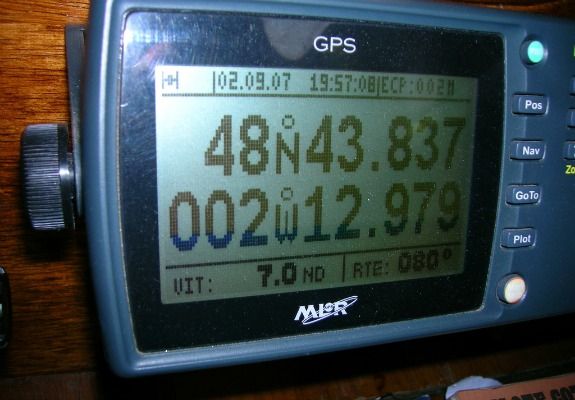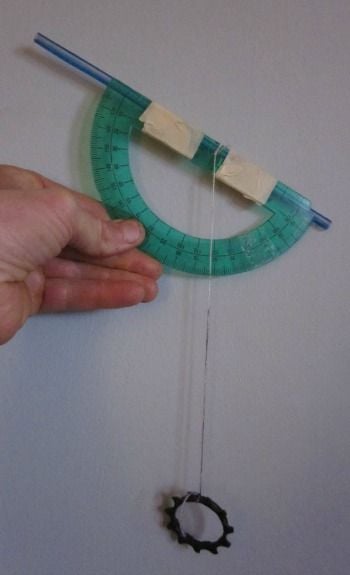Have GPS Devices Taken the Fun out of Navigation?
With the rise of the digital age, the fascinating skills of map reading and celestial navigation are becoming lost arts
/https://tf-cmsv2-smithsonianmag-media.s3.amazonaws.com/filer/39/a9/39a93a7c-3093-4403-8a3d-1ab216255090/mapsworldbig.jpg)
It took explorers centuries of great effort to make the first crude sketches of the world and centuries more to polish and perfect them.
But in just ten years, sales demand for paper maps appears to have dipped markedly, and it seems these formerly essential tools of travel could be going the way of the sextant and chronometer as travelers rely increasingly on electronic navigation devices to get them where they want to go. In Pennsylvania, printers who once produced three million road maps a year now make just 750,000. AAA, too, has observed a decline in customer use of maps. And even print-out directions that lead from point A to point B—which I always thought was cheating, anyway—seem now to be a figment more of memory than of practice as that robot voice from the dashboard becomes an increasingly ubiquitous component of driving anywhere.
If we are, in fact, ditching the map for flashier gear, will we be better off? Maybe not. A study conducted in Tokyo found that pedestrians exploring a city with the help of a GPS device took longer to get places, made more errors, stopped more frequently and walked farther than those relying on paper maps. And in England, map sales dropped by 25 percent for at least one major printer between 2005 and 2011. Correlation doesn’t prove causation—but it’s interesting to note that the number of wilderness rescues increased by more than 50 percent over the same time period. This could be partly because paper maps offer those who use them a grasp of geography and an understanding of their environment that most electronic devices don’t. In 2008, the president of the British Cartographic Society, Mary Spence, warned that travelers—especially drivers—reliant on electronic navigation gadgets were focusing mainly on reaching a destination without understanding quite how they got there. And Tom Harrison, a cartographer in California, told me recently in an interview that he feels digital technology usually does a clean job of directing travelers where they want to go—but without quite showing them where they are.
“Trying to see and understand the big picture on your phone or laptop usually isn’t possible,” said Harrison (who also noted that he has not observed a decline in sales of waterproof topographic maps via his website). “There’s too much zooming in, scrolling down, losing your bearings.” At best, hand-size GPS screens show one “the here and the now,” he said, while only paper maps can reliably “show us where we are and also what’s around us.”
Using real printed maps also demands—and can help users develop—critical thinking skills.
“You look at the map for a minute,” Harrison said. “Then you say, ‘I’m here, and I’m going there. What’s the easiest way?’ But with GPS in the car you don’t even have to think about it anymore.”
The shift to full reliance on navigational technology is happening at sea, too. Grant Headifen, the founder of the online sailing academy NauticEd, says sailors are increasingly relying on GPS systems while neglecting to learn what he calls “the fundamentals”—the basic skills of navigating only by charts, compass, sky and the mighty strengths of the human brain.
“You need to be able to say, ‘If north is straight ahead of me, then east is to my right,’ and ‘If point A is 50 miles ahead and we’re moving this fast, then this will be our estimated time of arrival,’” said Headifen.

Reliance on electronics, which operate under the guise of flawlessness, is “very dangerous,” Headifen says—mainly because navigation charts may themselves be drawn incorrectly. For instance, a GPS system may guide you with perfect accuracy past a treacherous seamount—but if that reef was originally mapped incorrectly, the GPS system could actually be guiding you into a million-dollar accident. Headifen cites a time that he was sailing off the coast of Croatia. Because of incorrectly drawn charts, his GPS system placed his location at roughly 300 meters inland among the coastal olive orchards. Another time, a sailing companion with his eyes glued to his iPhone muttered directions to Headifen. “In 50 meters we want to veer left,” the man said. Headifen replied, “Um, look away from your phone for a minute, and look ahead of us.” A rock stood precisely in the course the iPhone recommended.
Harrison, too, has noted previously to reporters an important difference between being “precise” and being “accurate,” both of which a GPS device can be at once by pointing a tech-tuned traveler straight to the wrong place.
In spite of the growing prevalence today of navigation technology, enough people remain interested in traditional navigation that Headifen offers a course on celestial navigation. This brilliant science has its roots in ancient Arabian cultures of the desert, where travelers long ago determined their location on Earth by watching the heavenly bodies above. For travelers in the Northern Hemisphere, the North Star, or Polaris, made determining latitude a piece of cake: The star’s distance above the horizon in degrees equals the viewer’s degree distance north of the Equator. Thus, when sailors left port in the old days, they often remained at a given latitude by watching Polaris and appropriately adjusting their course. They knew that by following that line, they would reach home again. (Determining longitude was a much more difficult endeavor, and would only become relatively easy with the invention of the chronometer in the late 1700s.)
Still, navigation remained challenging. Sailing expeditions often had a crew member whose specific job was to navigate—and these were among the most skilled people on the seas. They were familiar with the stars, the ecliptic of the Sun and also the orbital path of the Moon. They carried a variety of beautiful and ingenious tools over the years, like the astrolabe, octant and quadrant. But the sextant has remained the most used. It’s actually based on rather simple geometry, allowing one to sight a point in the sky—usually the Sun or a star—and measure its distance from the horizon. Combined with the chronometer and basic star charts, a good navigator could track a vessel’s location exactly—though this was a very difficult task. In fact, if executed correctly and accurately, celestial navigation is flawless—for our place on Earth is written in the stars; one must simply have the tools and skills to read the sky.

Celestial navigation made easy: Even if we’re too lazy to read maps anymore, reading the stars can be fun. Measuring latitude is a basic calculation and an engaging way to track your progress should you decide to tackle a long-distance north-to-south hiking or cycling route. Before your next trip, try this: Fix a sturdy plastic straw to the straight edge of a protractor. This device, familiar, I hope, from high-school geometry classes, should have a pinhole at the center of the baseline. To this point, tie off 12 inches of string and fix a heavy nut or bolt to the other end. Pack the contraption along. On your first night out, hold the device with the protractor facing down, look through the straw and aim it at Polaris. When you are able to see this conveniently located star, pinch the string to the side of the protractor. If the string is crossing, say, the 53-degree mark, subtract that number from 90. The answer, 37, is your latitude. If the next night you get a reading of 54, meaning 36 degrees latitude, that means you have traveled 69 miles (the distance between latitude lines) toward the Equator. In the Southern Hemisphere, there is no equivalent of Polaris, and celestial navigators may need to rely on a measurement of the Sun at its zenith to determine latitude. This website describes how.
Navigation of tomorrow: While no-brainer navigation systems currently dictate directions to drivers, tech companies are busy designing the next step in the road to laziness: automated vehicles. Nevada, Florida and California have already legalized driverless cars. While these marvels of technology aren’t yet publicly available, they do exist. Google has been testing one that reportedly had gone 300,000 miles, and counting, without an accident. What’s astonishing is that the machines seem to work perfectly well. What’s scary is the thought of them failing—of missing an offramp by ten feet, of not recognizing a pedestrian, of misinterpreting an obstacle in the road, or otherwise failing where a human mind might not.
/https://tf-cmsv2-smithsonianmag-media.s3.amazonaws.com/accounts/headshot/Off-Road-alastair-bland-240.jpg)
/https://tf-cmsv2-smithsonianmag-media.s3.amazonaws.com/accounts/headshot/Off-Road-alastair-bland-240.jpg)